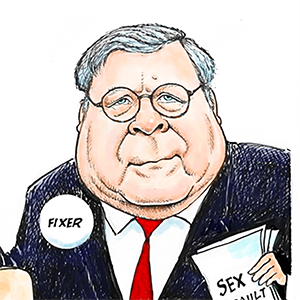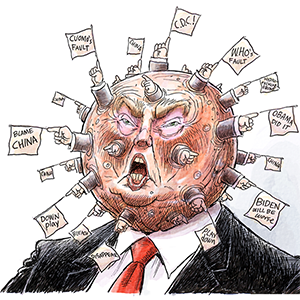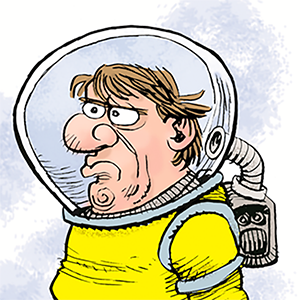Trump was told by Europeans that his Ukraine plan needs work
Published in News & Features
European leaders and other allies told the U.S. that its peace plan for Ukraine needed “additional work,” in a rushed bid to try and slow walk a Trump administration determined to give concessions to Russia and impose terms by Thanksgiving.
They issued a statement at a Group of 20 summit in South Africa that President Donald Trump blew off but where many of them were headed when the controversial details of the 28 point-peace plan were leaked. The U.S. set a Thursday ultimatum yet Trump indicated in an NBC interview that this wasn’t his “final offer,” hinting at some flexibility on timing.
In Johannesburg, the panicked leaders sought to buy President Volodymyr Zelenskyy time and scrambled to get on a call, exchange notes and come up with a counterproposal that wouldn’t alienate an impatient U.S.
Their challenge was to find the right formulation of words in response to a plan that offers hard-to-swallow land concessions to Russia, caps the size of the Ukrainian army, stops it from ever joining the NATO military alliance and saddles the European Union with the cost of reconstruction.
In short, it appeared like everything Russia would want in a grueling war of attrition entering its fourth winter. A senior European military official said there’s a real chance the group fails to convince Trump to change his stance.
“The draft is a basis which will require additional work,” according to a statement that started off with some muted praise for the plan as a basis for with some important elements. “We will continue to coordinate closely with Ukraine and the U.S. over the coming days.”
European leaders, joined by Group of Seven members Canada and Japan, pushed back against the notion that Ukraine’s borders could be shrunk or that the armed forces could be limited to 600,000 personnel.
The next stop is a meeting of top national security officials in Geneva on Sunday, in a zig-zag of last-minute diplomacy. Trump has given Ukraine until Thursday to accept his plan, and U.S. officials have threatened to halt weapons supplies and intelligence if it refuses.
The speed with which the White House is trying to push the proposal through has shocked Ukraine and its allies, coming at a time when Trump is waging multiple political fights at home.
European leaders are deploying the same playbook from earlier this year when Zelenskyy was ambushed in the Oval Office and berated for being ungrateful for U.S. efforts.
Like back then, the task of trying to correct course now mainly falls upon the leaders of the U.K., Germany and France. The trio have been privately working on a more detailed response to the U.S. blueprint that will be discussed in the coming days.
The statement issued on Saturday is a mere stop gap.
Under the terms proposed by the U.S., Ukraine would have to withdraw troops from parts of the eastern Donbas region that Russia has failed to fully occupy. The area would become a neutral demilitarized buffer zone internationally recognized as Russian.
Moscow would also obtain de facto recognition over Crimea, Luhansk and Donetsk. Most of the remainder of the front line, including in Kherson and Zaporizhzhia, would be effectively frozen.
Zelenskyy struck a grave tone in a video address to the nation.
“Now it’s one of the most difficult moments in our history,” he said late Friday. “Ukraine may face a hard choice — either the loss of our dignity or the loss of our key partner.”
At home he’s battling an ever-expanding corruption scandal that threatens to engulf his powerful chief of staff, Andriy Yermak, who will nevertheless join national security advisers from the U.S., Ukraine, Germany, France and the U.K. in Switzerland.
The U.S. will likely be represented by Marco Rubio, special envoy Steve Witkoff and Army Secretary Dan Driscoll, who has now taken a central role as an enforcer for Trump when it comes to Ukraine.
The drafting of the U.S. plan was led by Witkoff and Russian envoy Kirill Dmitriev, without much American interagency involvement and key officials in the dark until late in the process, according to people familiar with the matter. Rubio, they said, was not involved.
Driscoll briefed European ambassadors earlier this week that a deal had to be done sooner rather than later, Bloomberg reported earlier. He told the envoys that Ukraine was in a bad position and now was the time for peace, adding that President Trump wanted a deal soon.
This is a potential make-or-break moment not only for Zelenskyy but also U.K. Prime Minister Keir Starmer, German Chancellor Friedrich Merz and French President Emmanuel Macron. Delay tactics can only go so far and they will soon get a sense of how serious Trump is about walking away and cutting all support for Ukraine.
Under the current Trump plan, Ukraine would receive a U.S. security guarantee — albeit one that Washington would be compensated for. The U.S. would also get 50% of profits from a venture using frozen Russian assets to rebuild and invest in Ukraine, and enter an economic partnership with Moscow once sanctions are lifted.
As things stand, these terms are also a concern but not the parts of the plan they hate the most. Where the Europeans will truly dig in is on the size of the Ukrainian army. There can be no limit at all on that, according to a person familiar with the counterproposal.
Finland’s Alexander Stubb, seen as someone who also has Trump’s ear, said the Europeans weren’t even aware of the plan. He put forward their objections bluntly.
“This peace plan is incomplete and inconsistent,” the president told Finnish broadcaster YLE. “The proposal as it stands has many shortcomings — it certainly won’t go through in its current form.”
———
(With assistance from Mario Parker and Kirsi Heikel.)
©2025 Bloomberg L.P. Visit bloomberg.com. Distributed by Tribune Content Agency, LLC.







Comments